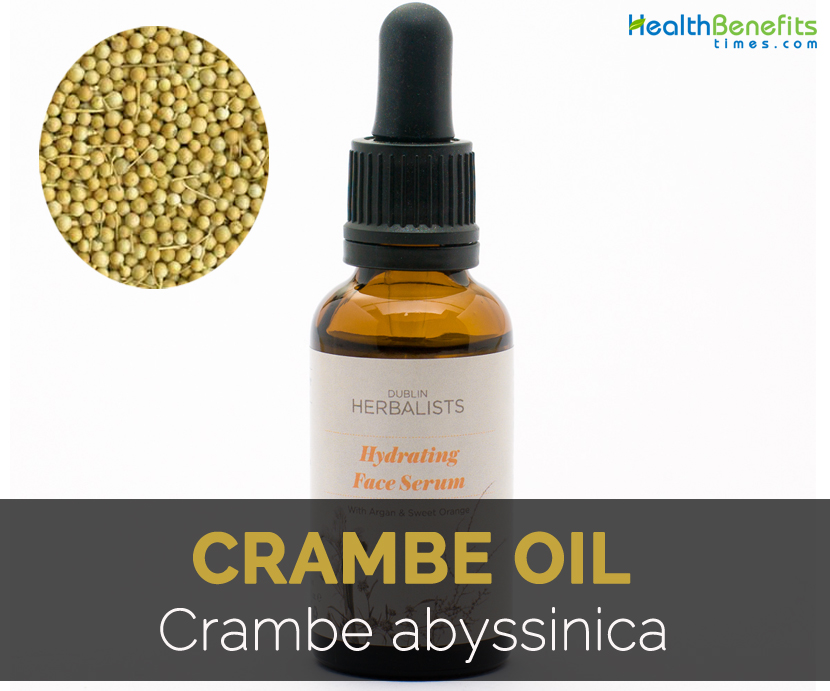| Crambe oil facts and uses Quick Facts | |
|---|---|
| Name: | Crambe oil facts and uses |
| Scientific Name: | Crambe abyssinica |
| Origin | Native to Mediterranean region, Eastern Africa particularly Abyssinia which is known as Ethiopia today. It was introduced in 1940s to United States and is also grown in Northern Central States of North Dakota. |
| Colors | Light golden to yellow |
| Health benefits | Softens hair, Treat acne, Easily penetrable, Prevent dehydration |
History
It is native to Mediterranean region, Eastern Africa particularly Abyssinia which is known as Ethiopia today. It was introduced in 1940s to United States and is also grown in Northern Central States of North Dakota.
Health benefits of Crambe oil
- It makes the hair soft.
- It is used in hair care products.
- It is easily penetrable and prevents dehydration.
- It prevents overproduction of sebum and acne.
- It could be used in lotions, massage oils, serums, conditioners and balms.
Crambe oil facts
Crambe seeds are cold pressed to derive the oil which could be converted into energy and industrial uses. This oil is an excellent source of long chain fatty acids and erucic acid which could be used as a slip agent for plastics and a constituent for heat sensitive dyes.
| Name | Crambe oil facts and uses |
|---|---|
| Scientific Name of Crambe seed | Crambe abyssinica |
| Native | Native to Mediterranean region, Eastern Africa particularly Abyssinia which is known as Ethiopia today. It was introduced in 1940s to United States and is also grown in Northern Central States of North Dakota. |
| Color | Light golden to yellow |
References:
https://www.amazon.com/Crambe-Abyssinica-Seed-Oil-60ml/dp/B00OFLPNXO
Awesome
Comments
comments
